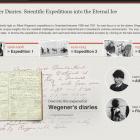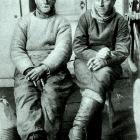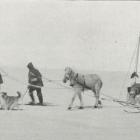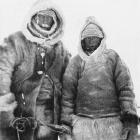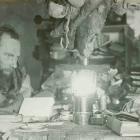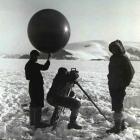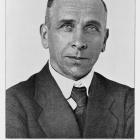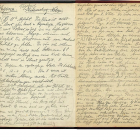Original Footage: Alfred Wegener’s German Greenland Expedition, 1930–1931 (1936)
The online virtual exhibition features a link to the original film: Alfred Wegener’s German Greenland Expedition, 1930–31 (Part 1–3), 1936, Bundesarchiv-Filmarchiv Berlin. Film embedded from ZDFmediathek on 22 January 2020.
Original film: Alfred Wegener’s German Greenland Expedition, 1930–31 (Part 1–3), silent, 35 mm, Production: Berlin: Reichsanstalt für Film und Bild in Wissenschaft und Unterricht, 1936, distributed by Degeto, 28 min., Bundesarchiv-Filmarchiv Berlin. All rights reserved. Film embedded from ZDFmediathek on 22 January 2020.
Commentary by Dorit Müller
The German Reichsanstalt für Film und Bild in Wissenschaft und Unterricht [Reich Institute for Film and Pictures in Science and Education] released this version of original footage from Alfred Wegener’s Greenland expedition (1930–1931) in 1936. The educational film follows the chronological course of the expedition, the first one to explore the Greenland ice sheet, to study arctic weather and air conditions, and to gain information about numerous geological structures as evidence of Wegener’s continental drift theory.
The film footage shows the polar explorers’ passage to Greenland, their arrival at the starting point for the ascent of the glacier leading to the inland ice 1,000 m above sea level (Part 1). This is followed by images showing the dangerous ascent of the explorers, carrying tons of equipment, and pictures of initial test rides on motor sleds and with dog sleds on the ice sheet (Part 2). Finally, the film documents the construction of Eismitte, a mid-ice research station, and various measurements carried out in the Arctic: weather observation, ice examination, measuring ice thickness, collecting snow samples from great depth, explosions, and the launching of a weather balloon (Part 3).
Particularly valuable and moving are the final shots of expedition leader Wegener, who died in 1930 on the sled ride from Eismitte to the coast together with his companion, Rasmus Villumsen. The film depicts the search for Wegener as well as the discovery and burial of his corpse in the ice, after his body had finally been found six months later in spring of 1931. At the end of the film, Wegener’s tragic death is glorified and fully aligned with the heroic rhetoric of the late 1930s, quoting one of the most famous lines in the Norse Poetic Edda: “Possession dies, kindred die, you yourself die like them; one thing I know, which will live forever: the dead man’s glorious deeds.”
The filmmakers used a 35mm spring-driven Kinamo movie camera, invented in 1923 by Emanuel Goldberg. Compared to the hand-cranked cinematograph cameras of the time, the compact Kinamo, weighing only one and a half kilograms, allowed flexible, hand-held filming; making it possible to film under extreme weather conditions. Several film versions were made from the footage, both silent and with sound, for broad audiences and for educational purposes.



